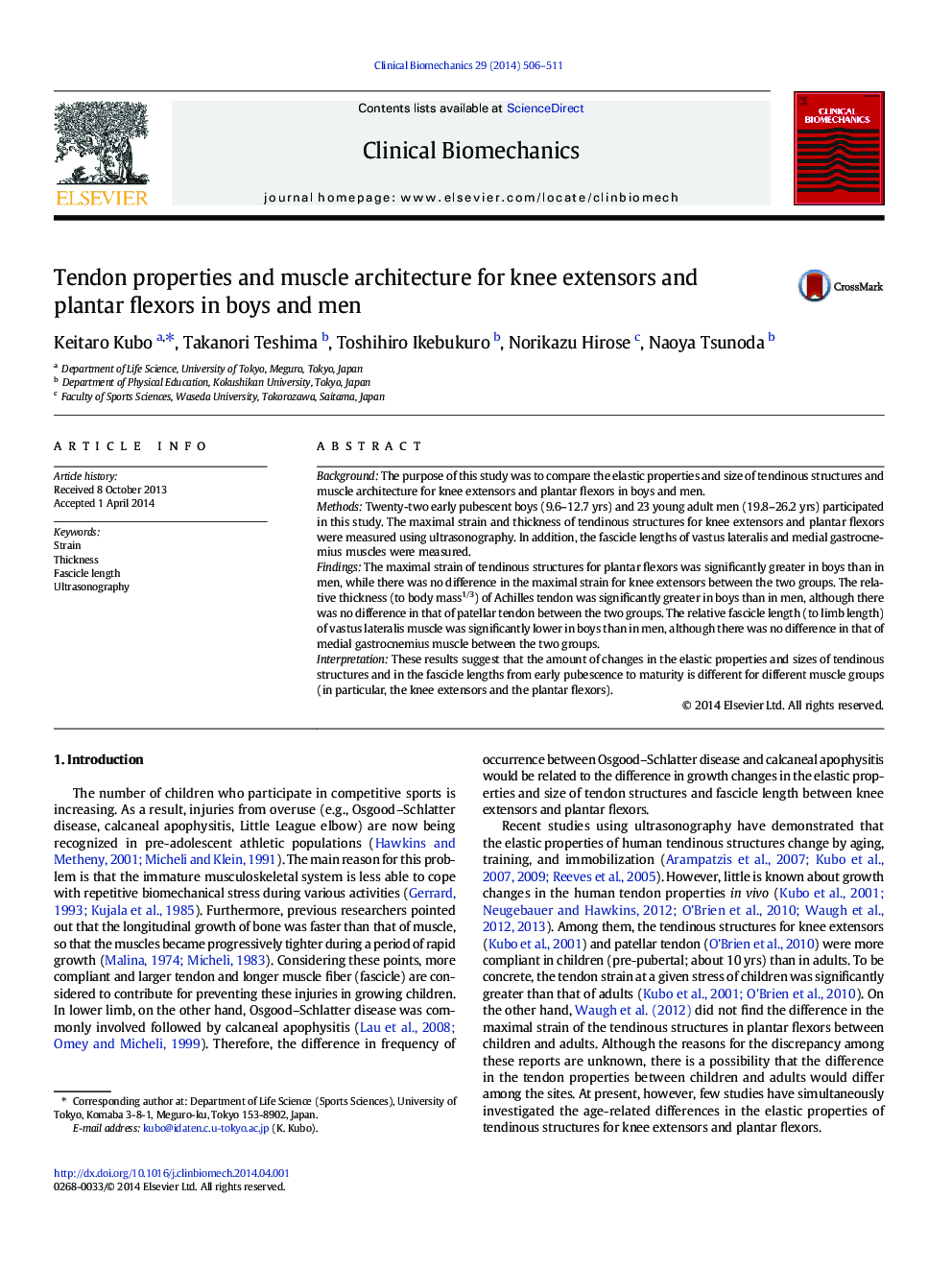| کد مقاله | کد نشریه | سال انتشار | مقاله انگلیسی | نسخه تمام متن |
|---|---|---|---|---|
| 4050341 | 1264922 | 2014 | 6 صفحه PDF | دانلود رایگان |

BackgroundThe purpose of this study was to compare the elastic properties and size of tendinous structures and muscle architecture for knee extensors and plantar flexors in boys and men.MethodsTwenty-two early pubescent boys (9.6–12.7 yrs) and 23 young adult men (19.8–26.2 yrs) participated in this study. The maximal strain and thickness of tendinous structures for knee extensors and plantar flexors were measured using ultrasonography. In addition, the fascicle lengths of vastus lateralis and medial gastrocnemius muscles were measured.FindingsThe maximal strain of tendinous structures for plantar flexors was significantly greater in boys than in men, while there was no difference in the maximal strain for knee extensors between the two groups. The relative thickness (to body mass1/3) of Achilles tendon was significantly greater in boys than in men, although there was no difference in that of patellar tendon between the two groups. The relative fascicle length (to limb length) of vastus lateralis muscle was significantly lower in boys than in men, although there was no difference in that of medial gastrocnemius muscle between the two groups.InterpretationThese results suggest that the amount of changes in the elastic properties and sizes of tendinous structures and in the fascicle lengths from early pubescence to maturity is different for different muscle groups (in particular, the knee extensors and the plantar flexors).
Journal: Clinical Biomechanics - Volume 29, Issue 5, May 2014, Pages 506–511